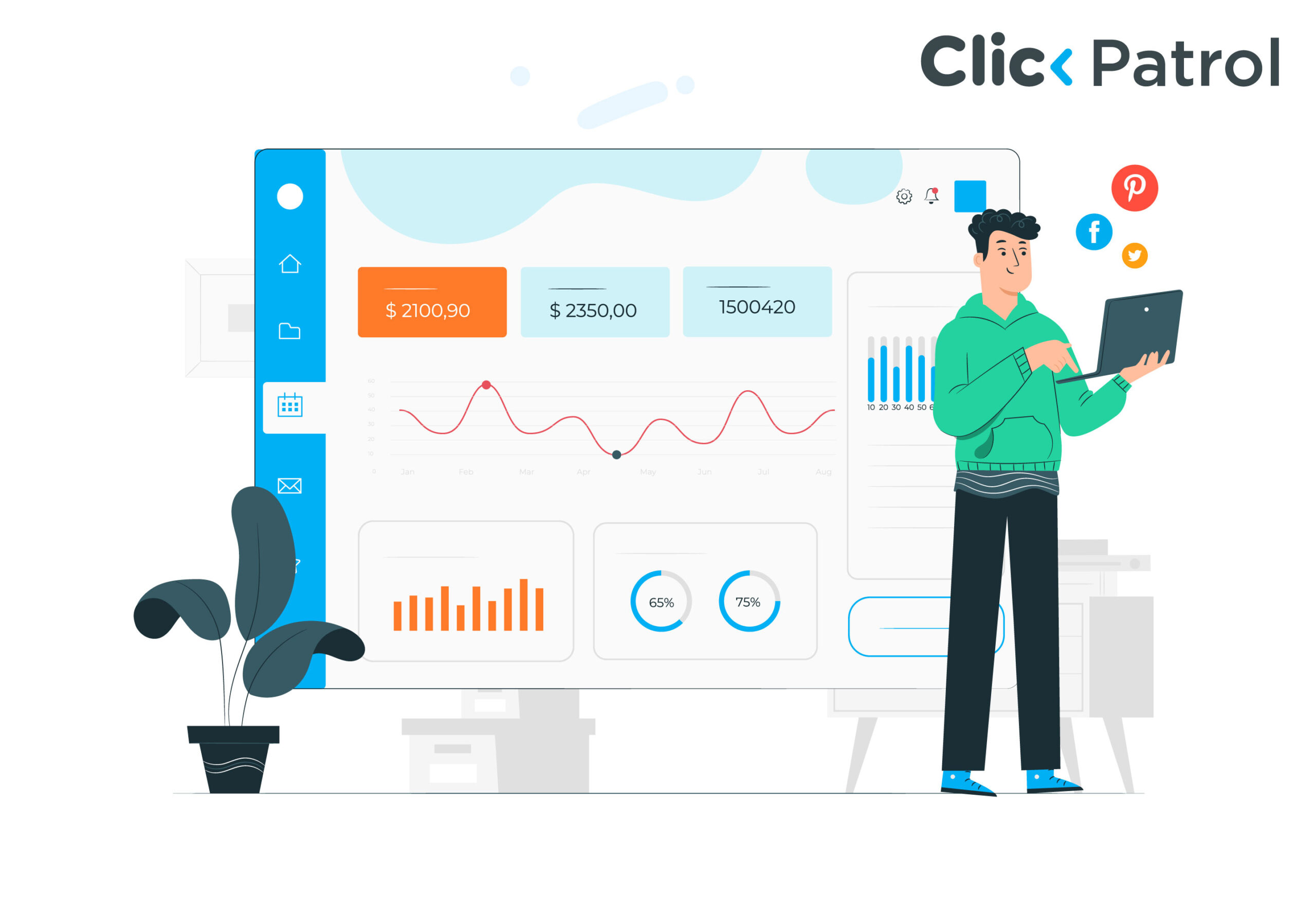
Common benefits of long-tail keywords: How to improve SEO & PPC performance
Abisola Tanzako | Apr 01, 2025

Table of Contents
Keywords are essential for increasing website traffic in pay-per-click (PPC) advertising and search engine optimization (SEO). Although many marketers concentrate on short, high-volume keywords, long-tail keywords have unique benefits that can greatly raise search engine ranks, engagement, and conversion rates.
Rather than focusing on a general term like “running shoes,” a long-tail keyword would be “best running shoes for flat feet 2024.”
Backlinko states that long-tail keywords dominate search engine marketing, accounting for 91.8% of all search inquiries. This guide will explore the advantages of long-tail keywords, how they improve rankings, and how to find the best ones for your business.
What are long-tail keywords?
Long-tail keywords are precise, multi-word keyword combinations that assist companies and marketers in reaching highly targeted consumers.
According to Ahrefs, 92% of all keywords get less than 100 searches per month, proving that most search traffic comes from long-tail queries. By narrowing down the search intent, long-tail keywords enable businesses to connect with users looking for specialized solutions, unlike short-tail keywords, which are competitive and broad.
The following is an example of a long-tail versus short-tail keyword:
- Short-tail keyword: “Smartphones”
- Long-tail versus short-tail keyword: “Best budget smartphones under $300 with good battery life”.
Although fewer individuals look for the long-tail keyword, they are far more likely to click, interact, and convert because it directly answers their needs.
Why long-tail keywords matter for SEO and PPC success
Long-tail keywords matter for the following reasons:
- Reduced competition: Companies might rank better in search results because fewer websites vied for long-tail keywords.
- Increased conversion rates: Long-tail keyword searchers are typically at the buying or action-ready stage of their search.
- More PPC-friendly: Long-tail keywords have lower Google Ads bids than high-volume keywords.
- Enhanced relevance: Precisely matching their search intent helps firms target the proper audience.
Key benefits of long-tail keywords
Businesses may successfully include long-tail keywords in their SEO and PPC strategies by being aware of their essential features.
1. Longer and more specific:
Keywords are unique to a subject, exemplary, or service and usually contain three or more words. A keyword’s ability to capture a user’s search intent increases with its length and level of specificity.
For instance:
- Generic keyword: “running shoes”
- Long-tail keyword: “Best running shoes for marathon training in hot weather.”
Users searching for a certain kind of running shoe are drawn to the second term since it is more focused.
2. Reduced volume of searches:
Long-tail keywords receive fewer monthly searches than short-tail keywords, which receive millions of searches. However, this is not an issue as it lessens competition and helps the website rank quickly.
For instance, unlike “wireless earbuds,” which receive hundreds of thousands of searches with fierce competition, “best wireless earbuds under $50” may receive only 1,000 searches per month, but they are easy to rank for.
3. High conversion rates and search intent:
Long-tail keyword searchers are usually in their purchasing process’s contemplation or decision phase.
They are more likely to click on search results and purchase because they already have a specific need or problem.
4. Less competitive and more cost-effective:
Long-tail keywords are popular among SEO specialists and advertisers because they have less competition, making ranking them in organic search results more straightforward. Businesses can obtain more traffic for less money by using long-tail keywords in Google Ads because they have a lower cost-per-click (CPC).
Here is a breakdown of keyword costs and competition levels in PPC advertising:
i. Best smartphones
- CPC Cost: $5.00
- Competition Level: High
ii. Best budget smartphones under $300
- CPC Cost: $1.50
- Competition Level: Low
As demonstrated above, long-tail keywords maintain a high conversion rate while lowering ad expenditures.
5. Voice search optimization:
The popularity of voice assistants like Google Assistant, Alexa, and Siri has made long-tail keywords more crucial than ever. Long-tail keywords are the most effective strategy for optimizing voice search SEO because voice search inquiries are typically longer and more conversational.
For instance:
- Text search: “cheap flights to Paris.”
- Voice Search: “What are the cheapest flights to Paris this weekend?”
Content optimization for conversational, long-tail keywords can help firms show up higher in voice search results.
Best practices for using long-tail keywords in content and ads
Profitable PPC campaigns and SEO success depend on selecting the appropriate long-tail keywords. Here’s how to find long-tail keywords with high value:
1. Use Google autocomplete:
One of the simplest methods for identifying long-tail keywords is to enter a general term into Google’s search bar and examine the autocomplete recommendations.
For instance, entering “best laptops” may yield recommendations such as:
- “Best laptops for gaming under $1000”
- “Best laptops for college students 2024”
These recommendations are straight from Google and represent actual user searches.
2. Look through the “People Also Ask” section on Google:
Long-tail keywords can be generated from user queries in Google’s “People Also Ask” (PAA) section. For instance, looking up “best protein powder” could turn up:
- “What is the best protein powder for muscle gain?”
- “Is whey protein good for weight loss?”
These are great to include in blog entries or FAQ sections.
3. Use keyword research tools:
Long-tail keywords can be found using several SEO techniques, such as:
- Google Keyword Planner: This is an excellent tool for researching SEO and PPC keywords.
- Ahrefs: This tool offers information on competitor analysis, search traffic, and keyword difficulty.
- SEMrush: Examines the keyword tactics of rivals.
- AnswerThePublic: Produces keywords based on long-tail queries.
For instance, searching for “email marketing” with Ahrefs may provide long-tail alternatives such as:
- “Best email marketing tools for startups”
- “How to improve email marketing open rates.”
4. Examine your competition’s keywords:
You might find long-tail keywords you may have overlooked by looking at the keywords your competitors rank for.
Businesses can identify the top-ranking keywords of their competitors and use them for their plans using tools like SEMrush and Ahrefs.
5. Make use of social media, forums, and Q&A websites:
Long-tail keywords are frequently derived from actual user conversations on sites such as:
- Reddit: Users pose in-depth queries regarding particular subjects.
- Quora offers actual user queries that can be utilized to generate potential keywords.
- Facebook groups: Communities where people talk about their problems and needs.
For instance, a Quora search for “best budget DSLR camera” may yield relevant long-tail keyword queries such as:
- “What is the best DSLR camera for under $500?”
- “Which budget DSLR camera is best for beginners?”
These real-world questions can be optimized into blog themes, PPC ads, and product descriptions.
The effectiveness of long-tail keywords
Long-tail keywords are a treasure trove for companies trying to boost conversions, cut expenses, and raise their SEO ranks. They increase quality traffic, enhance ad efficiency, and target particular user intent.
Long-tail keywords can be strategically used in your blog, website, PPC ads, and local SEO initiatives to produce a digital marketing plan that is more successful than the competition.
FAQs
Q. 1 Why are long-tail keywords important for SEO?
Long-tail keywords are easier to rank because they are more focused and less competitive. Additionally, they align with user intent, increasing the possibility of increased conversions and click-through rates (CTR).
Q. 2 How can I determine which long-tail keywords are most appropriate for my niche?
Tools such as Google Keyword Planner, Ahrefs, SEMrush, and Ubersuggest can be used to identify long-tail keywords. Great long-tail keyword ideas can be found through Google’s “People Also Ask” area, related searches, and sites like Reddit and Quora.
Q. 3 What is the ideal word count for a long-tail keyword?
Long-tail keywords usually consist of three or more words. However, they can be longer, particularly for conversational or question-based search terms (such as “best smartphones under $500 for gaming”).
Q. 4 Should my blog posts contain long-tail keywords?
Yes, Long-tail keywords increase your chances of ranking on search engines and draw in focused, organic visitors. Your SEO performance is improved when you write thorough, excellent blog content centered around long-tail keywords.





